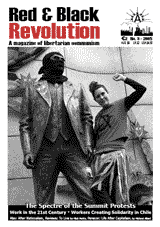Chainworkers means the 'workers in malls, shopping centres, hypermarkets, and in the myriad of jobs of logistics and selling in the metropolis'. Brainworkers means the knowledge workers, the programmers, the creatives and the freelancers. How do these categories pan out in the Irish labour market? Originally a box in the article The nomad, the displaced and the settler: Work in the 21st Century
Alex Foti of the Italian Chainworkers group coined the term Chainworkers and Brainworkers to describe new types of work. By Chainworkers he means the 'workers in malls, shopping centres, hypermarkets, and in the myriad of jobs of logistics and selling in the metropolis'. By Brainworkers he means the knowledge workers, the programmers, the creatives and the freelancers. How do these categories pan out in the Irish labour market? (13) In 1996, just over 3 million people were over the age of15. Of those just over 1.8 million or 58% were in the labour force (i.e. either working, looking for their first job or unemployed). A third of these workers lived in the greater Dublin area. Of those not considered part of the labour force, 34% were working in the home, 27% were students, 25% were retired, and 10% were not in the labour force due to illness of disability.
The big change in Ireland in the last 10 years had been the rapid increase in the number of women in paid employment. Female participation rates rose rapidly from 36.5% to 47.9% during the 1995-2000 period (The EU average in 2000 was 46.9%). Not surprisingly this has been mirrored by a drop in the numbers of women working in the home, from 661, 510 in 1986 to 417, 663 in 2002.
The largest category of workers are indeed the Chainworkers, the unskilled workers concentrated in manufacturing and the service sector (these accounted for almost a third of the Irish labour force). Those in personal services (the waitresses, the cleaners etc) experienced the highest growth rate of any occupation (their numbers grew by 49.7%).
However the second largest category are the blue collar workers found in manufacturing, construction and the drivers. These account for almost 20% of the Irish labour force. Finally the third largest group, are also in a more traditional form of employment, those employed in the public sector (13.5%). So a third of the Irish labour force are employed in the 'newer' service occupations, while a third are in more traditional fields.
How about the Brainworkers? These are a relatively small percentage of workers, representing 7.6% of the labour force. However they are also the category of workers that has experienced the second greatest rate of growth (their numbers grew by 35.6%).
These figures highlight that the numbers of displaced and nomads are growing, but also that a significant proportion of those working in Ireland, continue to be settlers. This has implications for the type of propaganda we produce and the struggles we are active in.
This article is from Red and Black Revolution 9, published Summer 2005


